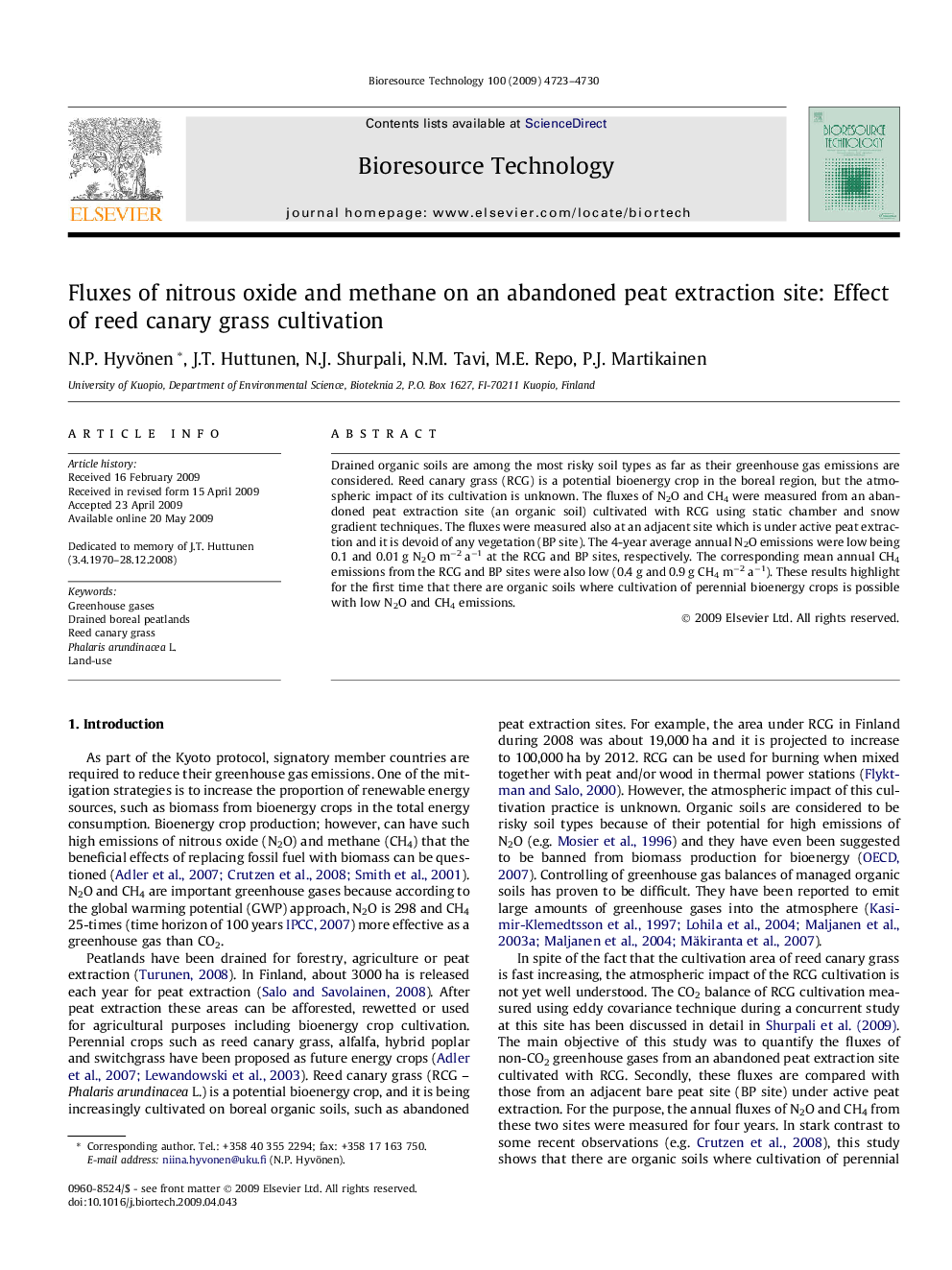| Article ID | Journal | Published Year | Pages | File Type |
|---|---|---|---|---|
| 683158 | Bioresource Technology | 2009 | 8 Pages |
Abstract
Drained organic soils are among the most risky soil types as far as their greenhouse gas emissions are considered. Reed canary grass (RCG) is a potential bioenergy crop in the boreal region, but the atmospheric impact of its cultivation is unknown. The fluxes of N2O and CH4 were measured from an abandoned peat extraction site (an organic soil) cultivated with RCG using static chamber and snow gradient techniques. The fluxes were measured also at an adjacent site which is under active peat extraction and it is devoid of any vegetation (BP site). The 4-year average annual N2O emissions were low being 0.1 and 0.01Â g N2O mâ2Â aâ1 at the RCG and BP sites, respectively. The corresponding mean annual CH4 emissions from the RCG and BP sites were also low (0.4Â g and 0.9Â g CH4 mâ2Â aâ1). These results highlight for the first time that there are organic soils where cultivation of perennial bioenergy crops is possible with low N2O and CH4 emissions.
Related Topics
Physical Sciences and Engineering
Chemical Engineering
Process Chemistry and Technology
Authors
N.P. Hyvönen, J.T. Huttunen, N.J. Shurpali, N.M. Tavi, M.E. Repo, P.J. Martikainen,
